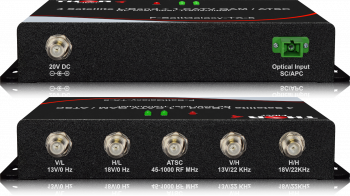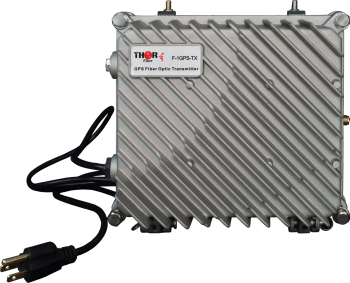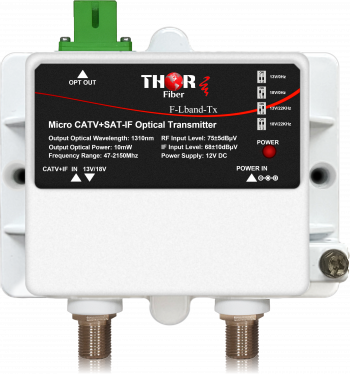Answer: 1) For the bi-directional RF over fiber, you could possibly use 2 of F-L-band-TxRx and use them in reverse over 2 fibers.
F-L-band-TxRx
The frequency range is 45-2600mhz
You would need to have 2 TX/RX sets to make it bi-directional and use
2 single mode fibers.
------------
we do not carry any duplexers that would be needed, but there are widely accessible options.
You would need to find out the forward frequency and return frequency; a duplexer acts as a filter for a specific band and passes the other.
The exact frequency bands can vary between different generations of cellular technology (2G, 3G, 4G, 5G), and different carriers might use different bands
Here are some commonly used frequency bands in the United States for various cellular technologies:
-
2G (GSM):
- GSM 850: 824-849 MHz (Uplink), 869-894 MHz (Downlink)
- GSM 1900: 1850-1910 MHz (Uplink), 1930-1990 MHz (Downlink)
-
3G (UMTS):
- UMTS Band II (1900 MHz): 1850-1910 MHz (Uplink), 1930-1990 MHz (Downlink)
- UMTS Band IV (AWS): 1710-1755 MHz (Uplink), 2110-2155 MHz (Downlink)
-
4G (LTE):
- LTE Band 2 (1900 MHz): 1850-1910 MHz (Uplink), 1930-1990 MHz (Downlink)
- LTE Band 4 (AWS): 1710-1755 MHz (Uplink), 2110-2155 MHz (Downlink)
- LTE Band 12/17 (Lower 700 MHz): 699-716 MHz (Uplink), 729-746 MHz (Downlink)
- LTE Band 13 (Upper 700 MHz): 777-787 MHz (Uplink), 746-756 MHz (Downlink)
-
5G (NR):
- 5G NR n71 (600 MHz): 663-698 MHz (Uplink), 617-652 MHz (Downlink)
- 5G NR n77 (3.7 GHz): 3300-4200 MHz (Uplink), 3300-4200 MHz (Downlink)
These are general frequency ranges, and specific carriers may use variations within these bands. It's essential to check with the specific carrier and their allocated spectrum for the most accurate information. Duplexers for cell phones are designed to work within these frequency bands to enable simultaneous two-way communication.

 EN
EN


















